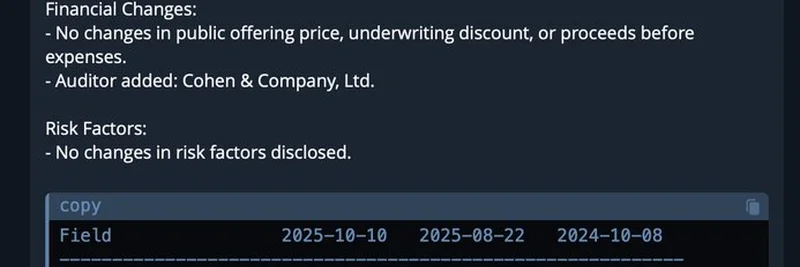In the fast-paced world of crypto, staying on top of regulatory moves can make all the difference. Recently, MartyParty (@martypartymusic on X) dropped an update that's got the XRP community buzzing. On October 10, 2025, Canary Funds filed an amendment to their Form S-1 for a spot XRP ETF with the U.S. Securities and Exchange Commission (SEC). This isn't just paperwork—it's a step forward in bringing XRP, the native token of the Ripple network, closer to mainstream investors through an exchange-traded fund (ETF). Let's break it down in simple terms and see what it means for the market.
What's New in the Amendment?
The amendment, officially Pre-Effective Amendment No. 2, builds on previous filings and sharpens the details for the Canary XRP ETF. For those new to this, an ETF is like a basket of assets you can buy and sell on a stock exchange, making it easier for everyday investors to get exposure to XRP without directly holding the crypto. Here's the scoop on the key changes:
Ticker Symbol: Updated to "XRPC." This is the shorthand you'll see if the ETF lists—think of it like stock tickers such as AAPL for Apple.
Exchange Listing: Specified as the Cboe BZX Exchange, Inc. That's a big deal because it means the shares could trade on a established platform, potentially boosting liquidity and accessibility.
Number of Shares: Set at 10,000 seed shares initially. These are like starter shares bought by an affiliate to kick things off, valued at $25 each for a total of $250,000 used to buy XRP.
Auditor Addition: Cohen & Company, Ltd. has been brought on board as the independent auditor. They handle the financial checks to ensure everything's above board.
Other tweaks include business updates, like clarifying the trust's structure as a Delaware statutory trust, and emphasizing no changes to the public offering price, underwriting discounts, or proceeds before expenses. Risk factors remain unchanged in this filing, but the document dives deep into ongoing concerns like XRP's volatility and regulatory hurdles.
The filing also outlines the custodians holding the XRP: Gemini Trust Company and BitGo Trust Company for the crypto assets, with U.S. Bank handling any cash. These are segregated accounts, mostly in cold storage (offline for security), to protect against hacks. The trust uses the CoinDesk XRP Price Index for valuing its net assets, pulling from major exchanges like Binance and Bitfinex.
Background on the Canary XRP ETF
Canary Funds, through their sponsor Canary Capital Group LLC, is pushing this ETF to track XRP's spot price minus expenses. Formed in September 2024, the trust isn't an investment company under traditional rules, which gives it flexibility but also means less regulatory oversight in some areas. This comes amid a evolving crypto landscape, with references to the SEC's August 2025 settlement with Ripple—where XRP was deemed not a security in secondary markets, but institutional sales still face scrutiny. Other nods include recent laws like the CLARITY Act of 2025 for classifying digital assets.
Previous filings date back to October 8, 2024, with amendments on August 22, 2025, and now this one. Each iteration refines the proposal, addressing potential SEC feedback. For context, XRP has been around since 2012, known for fast, low-cost cross-border payments via the XRP Ledger. As of October 8, 2025, it boasts a market cap of about $173.57 billion and daily trading volume around $4.73 billion.
Why This Matters for Crypto Enthusiasts
If approved, this ETF could open the floodgates for institutional money into XRP, similar to how Bitcoin and Ethereum ETFs have pumped up those markets. For meme token fans and broader blockchain practitioners, it's a reminder that regulatory wins in one corner—like Ripple's legal battles—can ripple out (pun intended) to boost confidence across the space. More liquidity in XRP might stabilize prices, indirectly benefiting volatile meme coins by drawing more overall investment into crypto.
However, don't get too hyped just yet. The SEC has a history of dragging its feet on crypto ETFs, especially with ongoing appeals in the Ripple case. Risks abound: XRP's price swings wildly (up to 100% annualized volatility), potential hacks on custodians, and even quantum computing threats down the line. Plus, the trust won't participate in staking or airdrops, sticking strictly to holding XRP.
Looking Ahead
MartyParty's tweet highlights how tools like SEC bots keep subscribers in the loop first— a pro tip for anyone trading or investing in crypto. If you're digging deeper, check out the full SEC filing or the original thread on X. As the crypto world evolves, filings like this are key to bridging traditional finance and blockchain. Stay tuned for more updates, and remember, this isn't financial advice—always do your own research.

